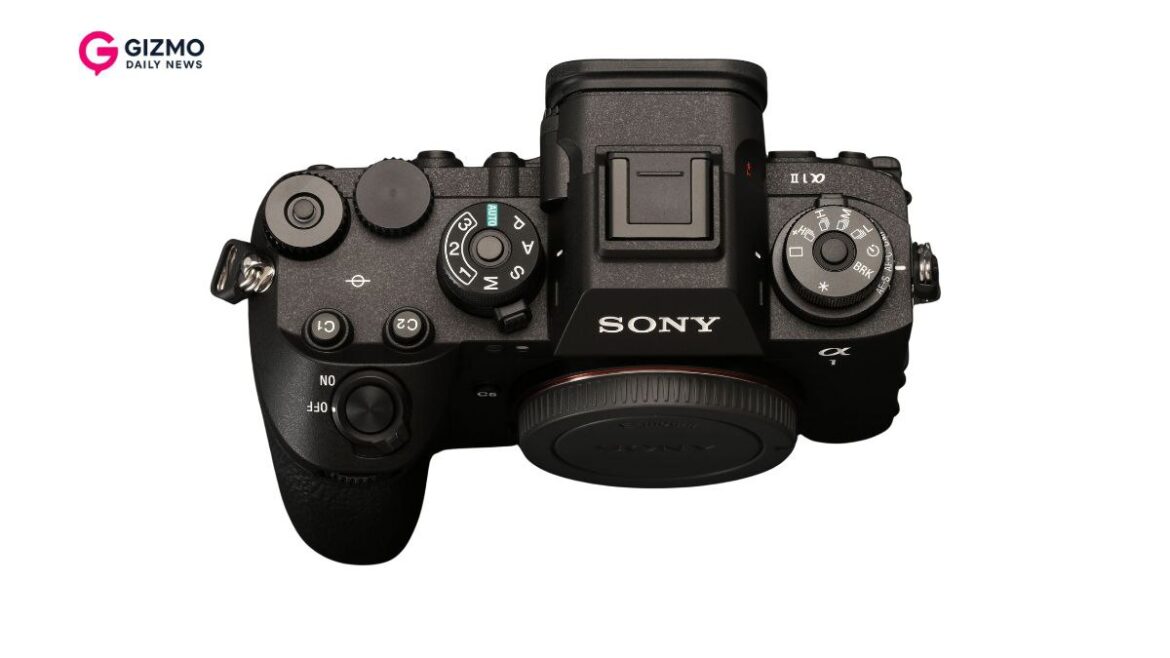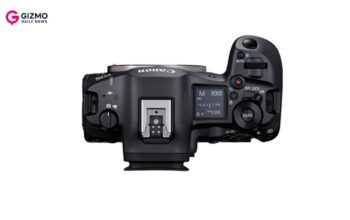Introduction
With the Alpha A1 II, Sony refines its flagship hybrid formula. The original A1 already pushed what a camera could do: resolution, speed, video. Now, with A1 II, Sony adds smarter AI, better ergonomics, more reliable autofocus, improved in-body stabilization, and workflow features that matter for working pros.
If you’re a sports, wildlife, editorial, or hybrid stills + video shooter, the A1 II is Sony’s boldest claim yet: one body to do everything, with fewer compromises.
Key Specifications (At a Glance)
| Specification | Detail |
|---|---|
| Sensor | 50.1MP full-frame Exmor RS stacked BSI CMOS sensor Sony+2YL Camera+2 |
| Processor / Engine | BIONZ XR image processor + dedicated AI processing unit sonylatvija.com+1 |
| Continuous Shooting | Up to 30 fps with AF/AE tracking, blackout-free EVF sonylatvija.com+1 |
| Autofocus Points | 759 point on-sensor phase detection AF Sony+2YL Camera+2 |
| Image Stabilization | In-body 5-axis IBIS, ~8.5 stops central stabilization, ~7.0 peripheral YL Camera+1 |
| Viewfinder | 9.44 million-dot EVF, ~240 Hz refresh rate YL Camera+1 |
| Rear Screen | 3.2-inch 2.1m-dot multi-angle touchscreen LCD YL Camera+1 |
| Video Capabilities | 8K 30p, 4K 120p in 10-bit, many pro video features Sweetwater+2The Verge+2 |
| Subject Recognition / AI | Improved Real-time Recognition AF: humans, animals, birds, insects, vehicles etc. sonylatvija.com+2YL Camera+2 |
| Pre-Capture & Speed-Boost | Pre-Capture up to 1 second, speed boost modes Sony+1 |
| Connectivity | 5 GHz MIMO WiFi, 2.5GBASE-T Ethernet, dual card slots (CFExpress A + SD) YL Camera+2Star Tech+2 |
| Body & Build | Magnesium / durable body, weather sealed, improved ergonomics, grip, etc. photographyblog+1 |
| Price (Body Only) | Approx. USD $6,499 globally; in Bangladesh ~ ৳755,000-₸800,000 depending on retailer and stock. The Verge+2Star Tech+2 |
Design & Ergonomics
Sony has retained the form factor familiar to A1 users but refined it. The grip is taller and more comfortable, beneficial for long bursts and large lenses. Weather sealing is excellent; the body feels rugged yet refined. Buttons are more tactile, menu dials more responsive.
The vari-angle (multi-angle) rear screen helps in difficult shooting angles, and the EVF’s blackout-free experience (especially at 30 fps) elevates usability in fast action settings. Tracking with the viewfinder feels smooth and precise.
Weight is substantial (body alone is in the 700––750g class) but appropriate for pro gear with an APS-C or full-frame lens attached. Handling emphasizes reliability and comfort over ultralight portability.
Autofocus, AI & Subject Recognition
One of the biggest improvements is in autofocus and subject recognition.
- The AI processing unit helps in Real-time Recognition AF detecting more subject types (people, animals, birds, insects, vehicles, trains etc.) with higher accuracy than previous models. YL Camera+2sonylatvija.com+2
- Human eye recognition improved, even under partial occlusion, wearing sunglasses, small faces in frame, etc. sonylatvija.com+1
- Pre-Capture mode: lets the camera capture frames before you fully press the shutter — very useful for peak action moments. Sony+1
- 30 fps burst with full AF/AE at 50MP is rare; the performance in tracking fast subjects (sports, wildlife) is vastly better than many competitors. Buffer depth improved; sustained bursts better than first A1 in many tests. YL Camera+1
Image Quality & Low-Light Performance
The full-frame 50.1MP sensor delivers crisp detail. At base ISO, images show superb sharpness and dynamic range. Highlight and shadow recovery are good. RAW files are versatile, with less noise at high ISOs than many prior Sony models, though some noise is still present once you push very high.
IBIS is strong (8.5 stops central, 7.0 peripheral) helping in low-light or with slower shutter speeds. Paired with fast lenses (e.g., f/1.2, f/1.4), the A1 II gives usable shots in quite dim environments.
Color rendition out of camera is excellent; Sony’s JPEG / in-camera settings are clean, and RAW is well supported in popular editors.
Video Capabilities
- Supports 8K at 30p and 4K at 120p in 10-bit internally, with quality codecs and profiles. Great for high-end video work. Sony+2Sweetwater+2
- Stabilization for video: combination of IBIS + active stabilization modes yield fairly smooth handheld video even with longer focal lengths.
- Subject recognition AF works in video too; birds, animals, etc., are tracked with more reliability.
- Additional video perks: clean HDMI output, support for pro color profiles like S-Log, S-Cinetone etc. Workflow friendly for editing.
Battery Life & Storage / Workflow
Battery life is solid for this kind of camera but not miraculous. For photo heavy use — bursts, tracking, etc. — expect to go through one battery per day (with high usage). If video + heavy AF + live view, possibly more.
Storage: dual slots (CFExpress Type A + SD) help flexibility. Fast write speeds required to sustain 30 fps RAW bursts. WiFi, Ethernet (2.5GBASE-T) help in fast transfers. For professional workflows, tethering / file offload speed matters — Sony delivers well here. Star Tech+1
Pros
- Rare combination of 50MP + 30fps burst with AF/AE tracking — extremely powerful for action + stills hybrid shooters
- Strong AI subject recognition, improved tracking, better low-light AF behavior
- Excellent video specs (8K, 4K120p) with good stabilization
- Robust build, better ergonomics, vari-angle screen, pro features like Pre-Capture & Speed Boost
- Dual card slots, fast wired/wireless connectivity, good workflow tools
Cons
- Very expensive — price restricts to professionals or those with serious needs
- Size & weight relatively high — not for travel light setups
- Battery drain under heavy video+burst + tracking usage is significant; may require spare batteries
- Complexity in menu / settings for new users; learning curve to unlock full potential
- While improvements are good, some might see incremental gains over original A1 rather than radical leaps in certain areas
Final Verdict
The Sony Alpha A1 II is not just “another upgrade” — it’s arguably the closest thing to a “dream camera” for pros who shoot everything: sports, wildlife, editorial, video, portraits. It brings many of the features users have been asking for: better AI autofocus, improved ergonomics, strong video chops, while holding onto the resolution and speed that made the original A1 special.
If you’re someone who needs nearly everything in one body, and can invest in quality lenses and accessories — the A1 II delivers enormous value (relative to what it offers). If you already have a top-tier pro camera with partial overlap in features, maybe some of these improvements won’t feel game-changing. But in total, it’s one of Sony’s most complete flagships ever.
Summary Table
| Spec | Detail |
|---|---|
| Effective Resolution | ~50.1 MP full-frame |
| Max Burst (Stills) | 30 fps with AF/AE, blackout-free EVF |
| Autofocus | 759 PD AF points, improved subject / eye / bird / insect recognition |
| Image Stabilization | IBIS, ~8.5 stops central / ~7 peripheral |
| EVF | 9.44 million dots, ~240 Hz refresh rate |
| Rear Monitor | 3.2-inch 2.1m-dot, 4-axis touch LCD |
| Video | 8K30p, 4K120p, 10-bit internal codecs |
| Connectivity | WiFi, 2.5G Ethernet, dual card slots |
| Build | Weather sealed, pro body, improved ergonomics |
| Price | ~USD $6,499 / ~৳755,000-800,000 in Bangladesh (body only) |
🌟 Conclusion
If you demand speed, resolution, hybrid performance, and intelligent autofocus in one camera, the Sony A1 II is about as complete as it gets. It may not redefine photography in every aspect, but it refines nearly every part of what a flagship camera should be.
For professionals, this is a premium tool that will make a difference in tough shoots, editorial deadlines, wildlife action, and video workflows. For enthusiasts, it might be overkill — but that overkill is impressive.
Final Words:
The Sony Alpha A1 II is Sony’s boldest statement yet in mirrorless pro gear. It’s a camera built without too many compromises — and in 2025, that’s precisely what you want if you work at the top.

